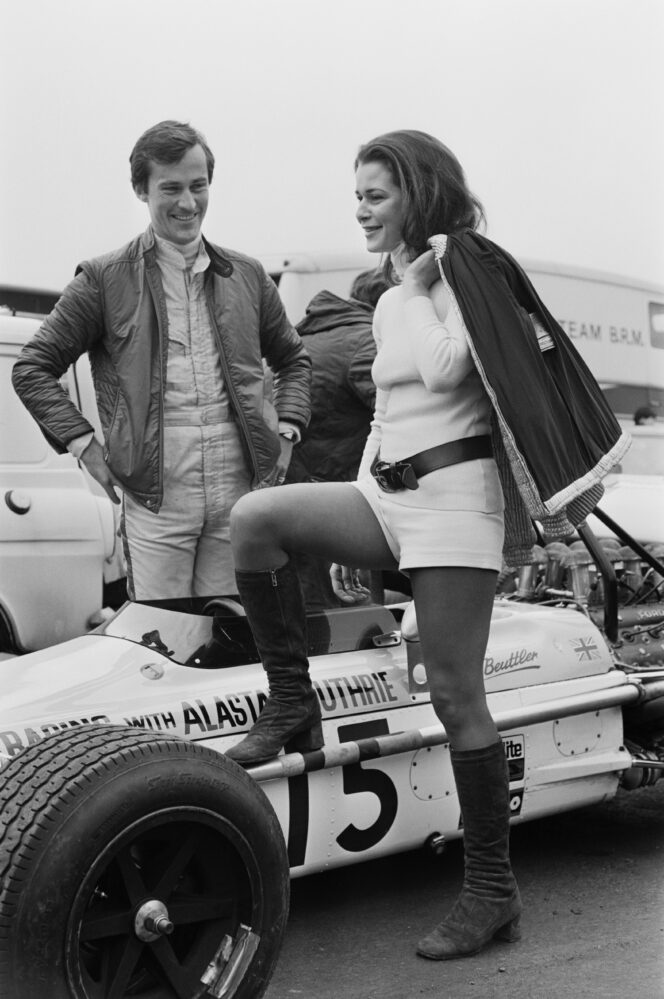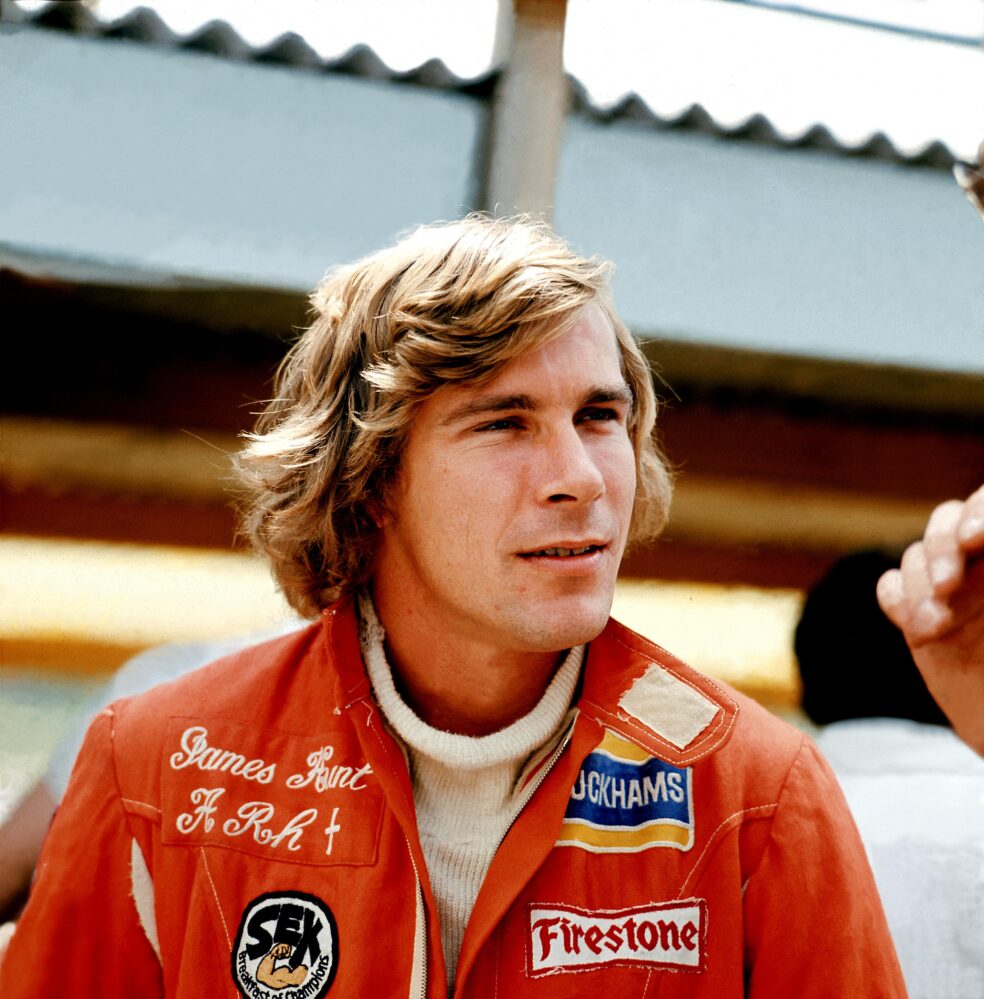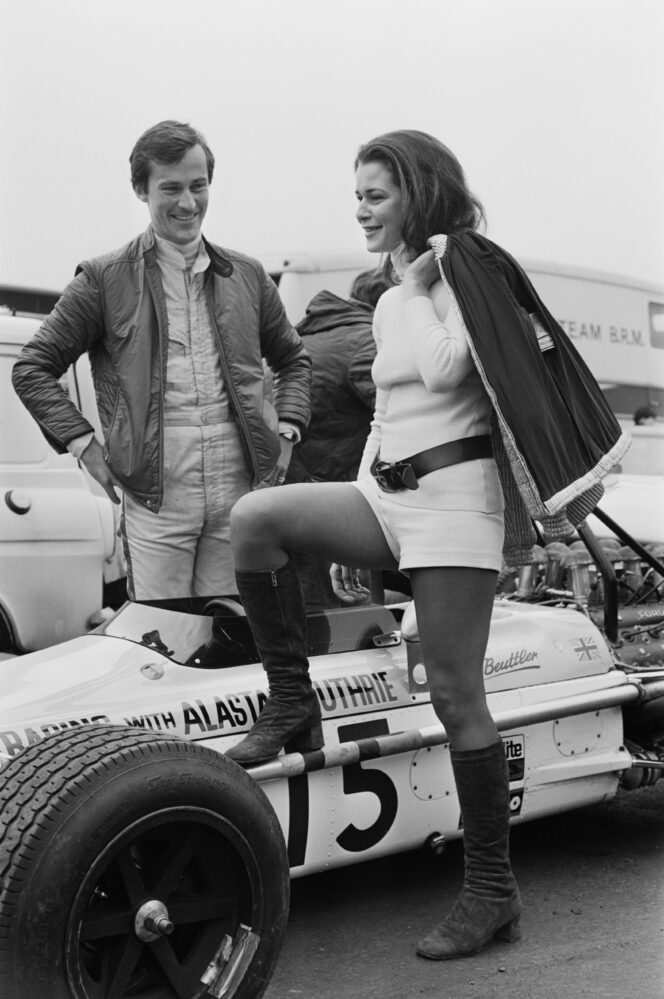“Were you one of Mike’s boyfriends?”
Martine Beuttler is surprised by the phone call. Speaking from her home in Saint-Tropez, on the French Riviera, the 78-year-old welcomes the chance to share memories of her beloved brother-in-law, Mike. After all, no one ever asks about him.
Mike Beuttler is Formula One’s forgotten LGBTQ pioneer: the only openly gay male driver to ever grace the sport’s elite championship.
He competed against the world’s most famous drivers during the 1970s — Niki Lauda and Ronnie Peterson foremost among them — before retiring young and leaving the United Kingdom to settle in the U.S. for the final 14 years of his life. Beuttler died in 1988 at age 48 of AIDS-related illness in Los Angeles.
Even within motorsport, little is known of the driver with dashing good looks who raced in a distinctive yellow car. Beuttler’s impact in a sport seemingly unwilling to shift gears is profound for those seeking queer representation at its pinnacle.
With an average global audience of 70.3 million per Grand Prix last season, motorsport’s elite championship has conquered Europe and is poised to take the United States by storm. But as viewing figures grow, the sport faces a challenge to modernize.
Those who met, raced against, and socialized with Beuttler reflect on how little they really knew about him.
Martine, who was married to Mike’s younger brother, Nick, remembers him simply as a loving brother-in-law. “I loved him very much,” Martine says. “He was a happy man with many friends.
“He was close to all the other drivers. In those days, the 1970s, the drivers knew how to have fun. Mike drank with Lauda and [fellow British racing driver] James Hunt. They were mad together.”

Beuttler was born in Cairo, Egypt, in 1940. He took up motor racing in the mid-1960s, first in Formula Three and then graduating to Formula Two. He made his F1 debut in 1971 at the British Grand Prix, racing in a privately-funded March Engineering car.
Beuttler is remembered as dogged and competitive, often emerging from his car dripping in sweat. He earned the nickname “blocker” on account of his obstinate refusal to ever be overtaken.
The late Max Mosley, the founder of Beuttler’s F1 team, once said: “Although he was never a front-runner, he was certainly good enough to have been one. When he, Ronnie and Niki were in the same cars, I wouldn’t say he was significantly slower than Niki.”
Beuttler’s sexuality appears to have been an open secret. Homosexuality had, after all, only been legalized in the U.K. in 1967. Many who knew Beuttler say the fact he was gay was never discussed in the paddock.
However, F1 during the 1970s was a fiercely alpha-male environment, epitomized by the ‘Sex, Breakfast of Champions’ sticker worn by 1976 world champion Hunt. Beuttler attended races with women on more than one occasion.
“Mike took girlfriends to races, but he was definitely gay,” says Martine. “I met some of his boyfriends — there was one, a gloriously handsome man with long blonde hair, who I loved. He lived for a while with his boyfriend in a fabulous house near St Paul’s Cathedral in London. I went there for dinner one evening and we had the most extraordinary time. There was no electricity in this huge house and we had dinner by candlelight. That was how Mike lived — sometimes he had little money, but he always had fun.”

Beuttler’s F1 career was financed by a group of stockbrokers. Backed by these significant finances and not short of determination, Beuttler competed in F1 for three seasons, from 1971 to 1973. Overall, he scored five top-10 finishes in his 28-race career.
And yet his time in motorsport ended suddenly, amid the 1973 oil crisis that made prices skyrocket, factories shutter, and further funding impossible. At 34, he retired and moved to the U.S., spending time in San Francisco and Los Angeles. Even his friends and relatives were mystified by his decision to move.
One man with a particular interest in Beuttler’s life and legacy is Matt Bishop, Chief Communications Officer at Aston Martin, the F1 team, and himself an openly gay man. Bishop believes Beuttler found life as a gay man in the U.K. in the 1970s intolerable.
“You have to remember that in those days gay sex was only legal “in private,” which meant you couldn’t do it in a hotel or even in a house with other people present in other rooms,” Bishop says. “I think it was all too much for Mike. I think in Los Angeles he was able to lead his life more freely.”
Martine and her husband were rarely in contact with Mike after he left the U.K. She speculates that he picked up odd jobs. Others have suggested he moved into the business world. What is certain is that his move coincided with the early years of the AIDS epidemic.
At some point in the 1980s, Beuttler began to show symptoms of the illness. “He wrote me a long letter telling me he was sick and asking for financial help,” says Martine.
“After that, we did not have much contact with him. I visited him once before he was ill. My sister, who lived in California, spent some time looking after him.”
Mike Beuttler died, at just 48 years old, of AIDS-related illness at the Cedars Sinai Medical Center in Los Angeles on December 29, 1988. His boyfriend flew his ashes back to his family in the U.K.
“Looking back, I think his boyfriend wanted to be part of the family, but we weren’t ready for that,” says Martine. “Mike’s death hit us hard, it was painful. Nick could not speak about it for a long time. I don’t know what happened to Mike’s boyfriend. I never saw or heard from him again. I think about both of them often.”
Martine and Nick emptied Mike’s ashes into the sea in front of a cemetery in Saint Tropez. “Mike has a beautiful view of Saint Tropez,” says Martine. “Nick is there as well, and one day I will join them.”
“Mike took girlfriends to races, but he was definitely gay. I met some of his boyfriends at the time – there was one, a gloriously handsome man with long blonde hair, who I loved.”
Bishop finds himself reflecting at length on Beuttler’s life and legacy. More than 30 years after Beuttler’s death, F1 still awaits another openly-gay driver. Indeed, at 59, Bishop is a rarity: an openly-gay man working in F1, as Chief Communications Officer at Aston Martin.
Bishop lives in London with his husband, 33-year-old Angel, and is one of the key figures behind the sport’s drive to modernize. He is a founding ambassador of Racing Pride, a movement aiming to promote LGBTQ inclusivity spearheaded by a young British driver, Richard Morris.
Bishop reveals he is often contacted anonymously by colleagues in F1 afraid to come out as LGBTQ and says he feels an obligation to fight for the rights of others.
“I was always going to come out, stand up, and be counted,” he says. “For all its progress, F1 is still largely white, male, and heterosexual. The women are usually in junior positions. The sport is changing, but it’s a slow process.”
Change is coming from the top. Days after Bishop spoke to LGBTQ Nation, Aston Martin’s Sebastian Vettel, F1’s global star, became the first driver to appear on the cover of Attitude, the British gay lifestyle magazine.

Vettel, famous worldwide at the age of 34, is the youngest world champion in Formula One. The German, married with three children, is also outspoken on LGBTQ rights. He wore the Pride flag at the 2021 Hungarian Grand Prix to protest the Hungarian government’s anti-LGBTQ stance.
“I wasn’t nervous or embarrassed by the rainbow colors, or of what people think,” Vettel told the BBC’s LGBT Sport Podcast after the race. “I wanted to send a message, and I was very proud to do it.”
“It doesn’t matter your skin color, it doesn’t matter your background, it doesn’t matter where you come from, it doesn’t matter who you fall in love with. In the end, you just want equal treatment for everybody.”
“A lot of people don’t know about Sebastian in terms of his allyship,” Bishop says. “He’s always been thoughtful and clever, and I think he just realizes the importance of allyship.”
Morris agrees. “What Seb did in Hungary was special. I’m in awe of him,” he says. “Adding his voice as an ally represented a huge shift for Formula One. It takes a huge amount of courage for him to get involved when he doesn’t have to. It makes it incredibly meaningful for me.”
Bishop also speaks warmly of Lewis Hamilton, the world-famous British Mercedes driver who has won an astonishing seven World Driver’s Championship titles.
Hamilton, who, like Vettel, is heterosexual, wore a Rainbow helmet during the Saudi Arabian Grand Prix last December. He used that occasion to publicly condemn the country’s LGBTQ laws.
“I worked with Lewis for five years and his support is absolutely genuine,” Bishop says. “Lewis is passionate about Black Lives Matter and he will also stand up as an ally for the LGBTQ community. He’s a proper ally — he won’t be silenced.”
“What Seb did in Hungary was special – I’m in awe of him. Adding his voice as an ally represented a huge shift for Formula One.”
Turning his attention to the future, Bishop is full of praise for Morris, who co-founded Racing Pride, the first concerted effort to raise LGBTQ awareness and inclusivity within European motorsport.
“Richard has huge energy,” says Bishop. “As well as being a good driver, he’s so important for motorsport. He’s pushed Racing Pride harder than anyone else.”
Morris and Bishop clearly inspire each other — two men generations apart who share a mentor-mentee relationship.
Morris was at the start of his career when he found himself facing homophobia for the first time.
“It was just before a race day, I was 14 and someone wrote homophobic slurs all over the stickers on my kart,” he says. “No one knew how to deal with it and I had to just cut the stickers away. I had just started to open up to friends about my sexuality and I went straight back into the closet. I still don’t know the person who did it — did they know I was about to come out? Was it bullying or was it worse than that, targeted abuse? It was a horrible experience.”

Morris is a driver for Revolution Race Cars and one of the brightest young talents in the country. He is also an LGBTQ advocate and cites that occasion as a teenager as one of his motivations for launching Racing Pride, a worldwide movement to promote LGBTQ inclusion in motorsport.
He co-founded Racing Pride in 2019. The organization’s ambassadors include British racing drivers Abbie Eaton and Charlie Martin, the latter of whom is also a transgender rights activist.
“It’s our ambition to create an international community of LGBTQ people in motorsport,” Morris says. “I’m racing in Europe this year and wherever we race I meet local members of the LGBTQ community. I bring them into the paddock, show them my car and try to create a connection.”
He is young, fiercely intelligent, and driven to create a genuinely safe environment for LGBTQ men and women in motorsport. “Motorsport was the last place I was fully out, and it was the most difficult,” he says. “I had never seen other LGBTQ drivers. There was no positive role model.”
On F1’s wait for its first out driver since Beuttler, Morris urges realism.
“I’m always reluctant to see a top competitor coming out as the answer,” he says. “It’s fantastic to have representation at the very top but it’s not the whole answer.”
Racing Pride is growing rapidly, embracing young drivers far beyond U.K. borders as they aim to create a safe space for the next generation of LGBTQ motorsport stars.
Whenever Morris travels to mainland Europe to race, he makes a point of meeting local young LGBTQ racing drivers at the start of their careers.
One such meeting took place earlier this year in the Netherlands when Morris and Eaton invited 16-year-old rising star Noor van Nispen to watch them race at the Zandvoort circuit. Noor’s ultimate goal is to race in F1, and she names Vettel as one of her idols. Before then she hopes to progress first to outdoor karting and then to Formula Four. Noor also identifies as LGBTQ and says Racing Pride gives her a feeling of security.
“I’m always reluctant to see a top competitor coming out as the answer. It’s fantastic to have representation at the very top but it’s not the whole answer.”
“The drivers at Racing Pride inspire me. It is an important initiative for me because we really need more diversity and support for the LGBTQ community in motorsports,” she says. “The fact we do not have any openly-LGBTQ drivers on most of the motorsport grids says enough. There is a taboo around being openly gay in top-level sports, which I find unacceptable.”
Noor speaks with confidence that reveals little fear of competing in motorsport as a queer woman.
“My sexuality should not define who I am and how people look at me,” she says. “As a woman, there are obviously people who will think you are not capable enough, but in the end, if you’re good enough it won’t matter.”
Through the efforts of individuals like Morris and Bishop, among many others, and their refusal to bow to discrimination, LGBTQ representation in European motorsport is increasing, and Noor’s generation will feel the benefit of their efforts for years to come.
“I would like to see more inclusion by LGBTQ people in the top levels of motorsport, such as Formula One,” Noor says. “To make that happen, we need to make it safer for them to be able to be themselves. Just give it time, eventually, there will be people at the top level of racing who are part of the LGBTQ community.”








